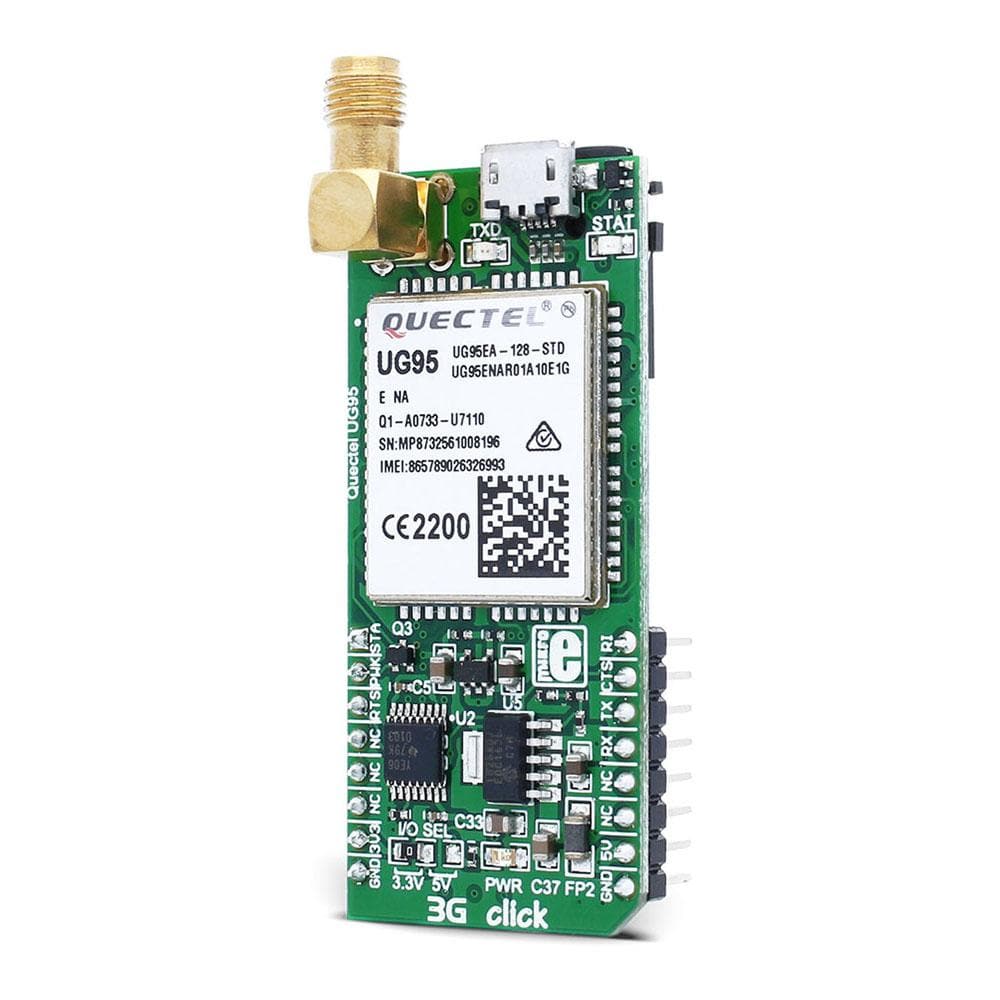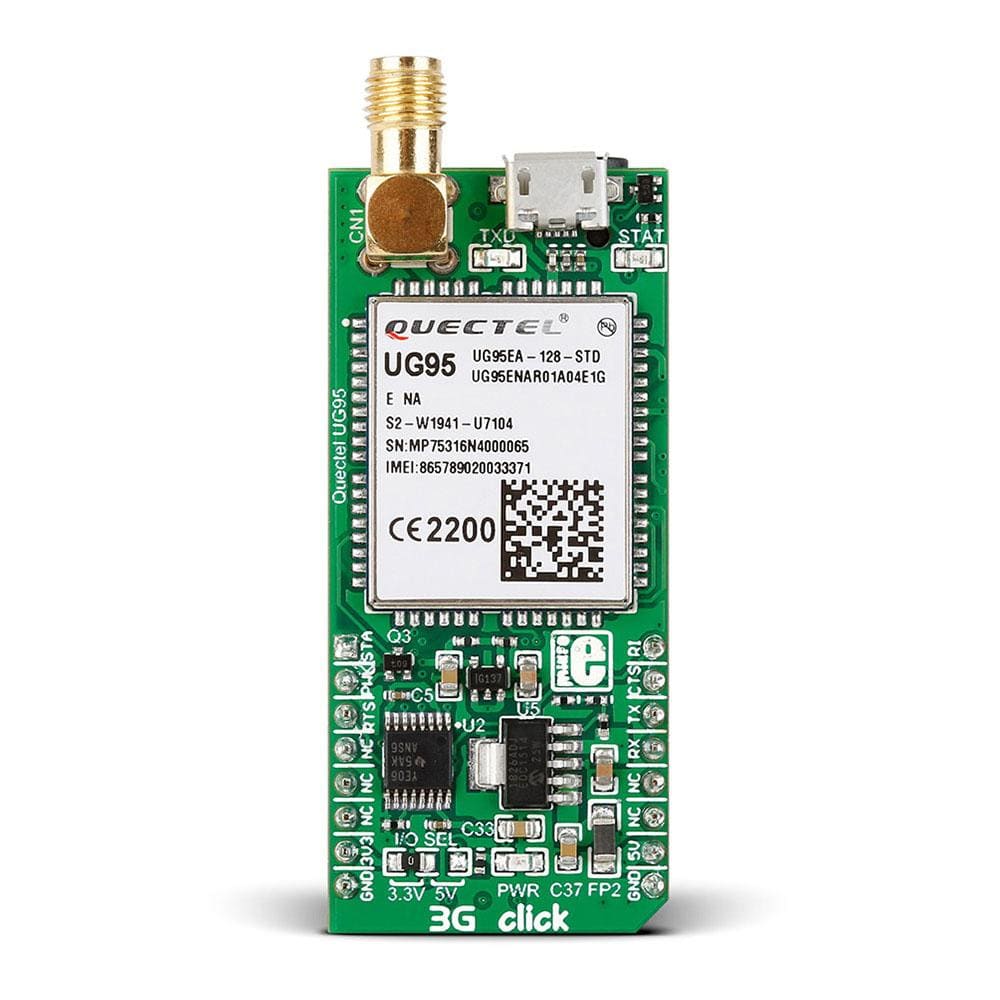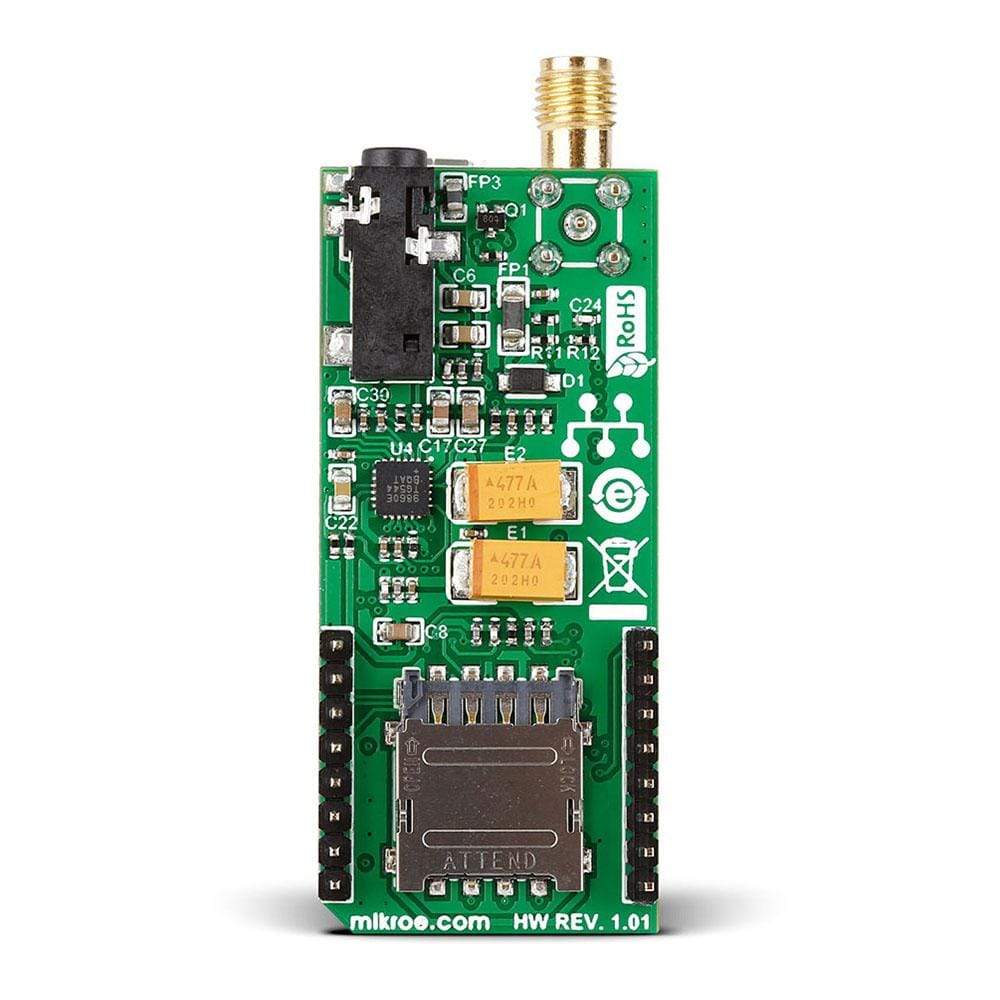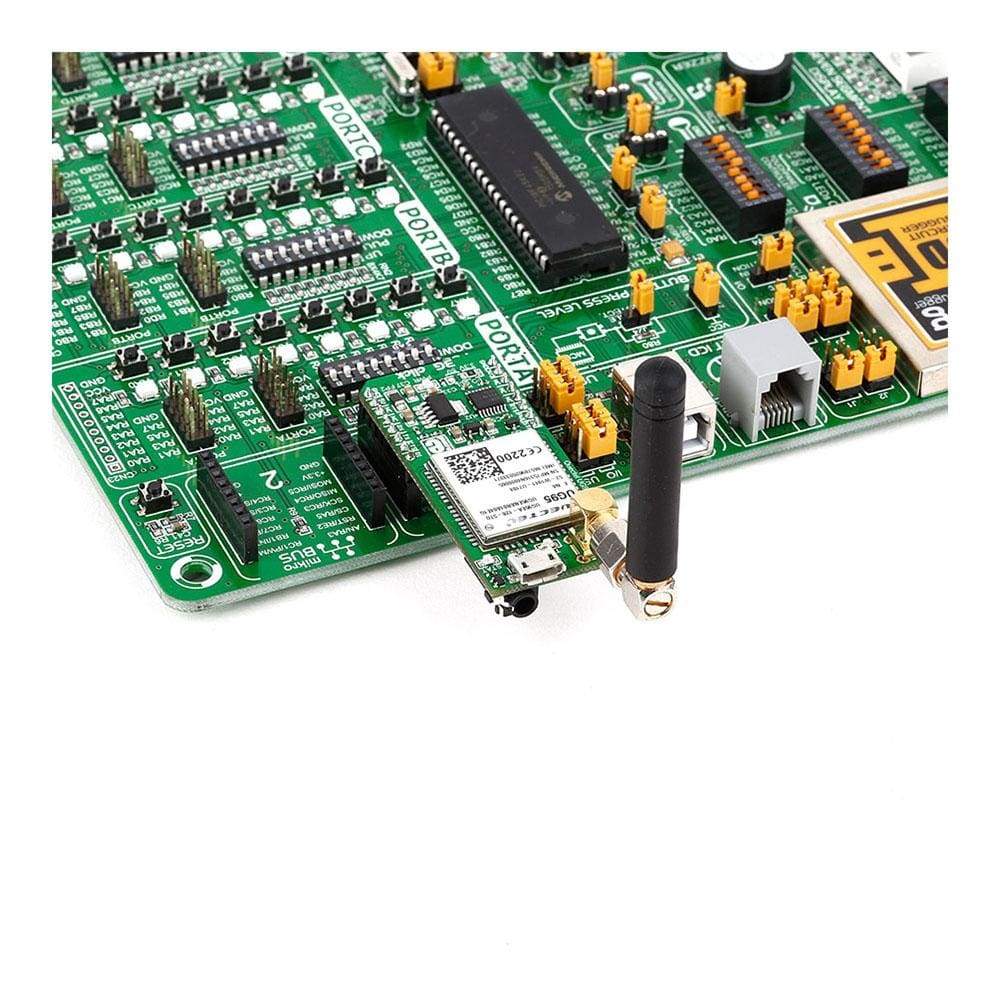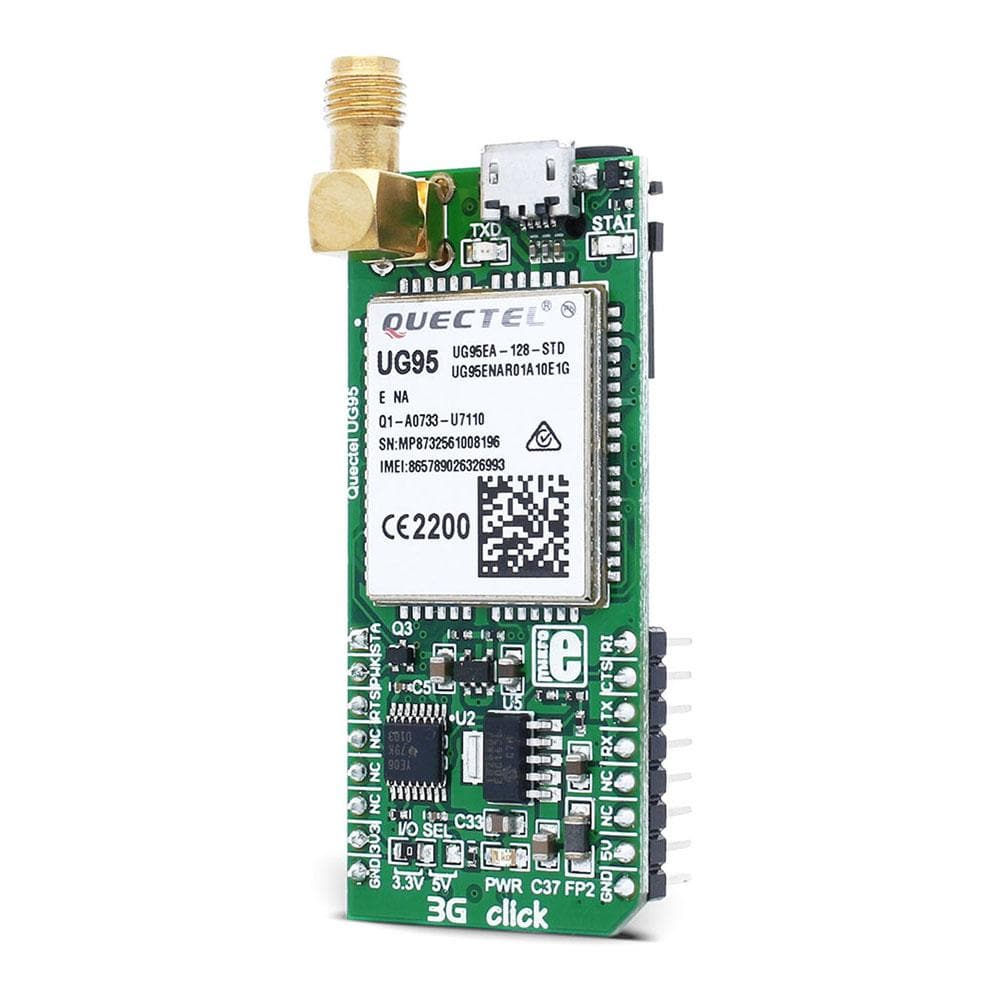
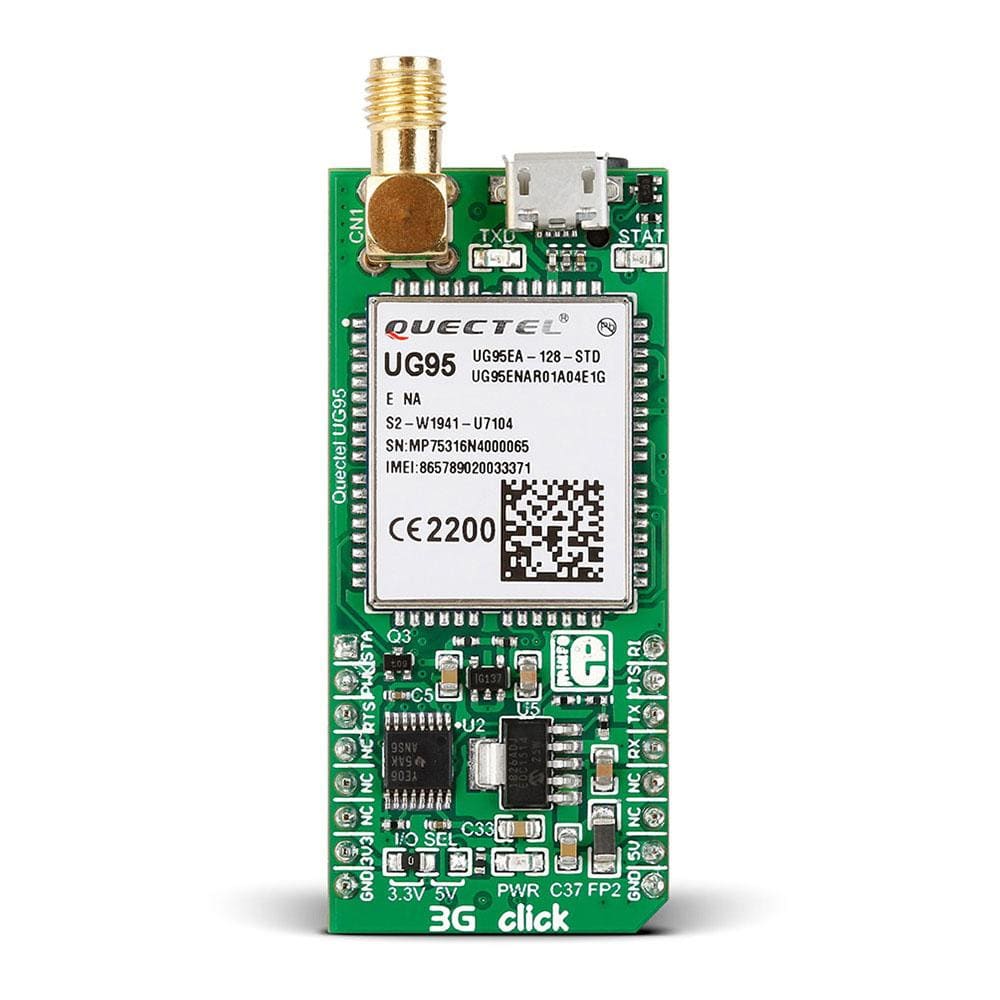
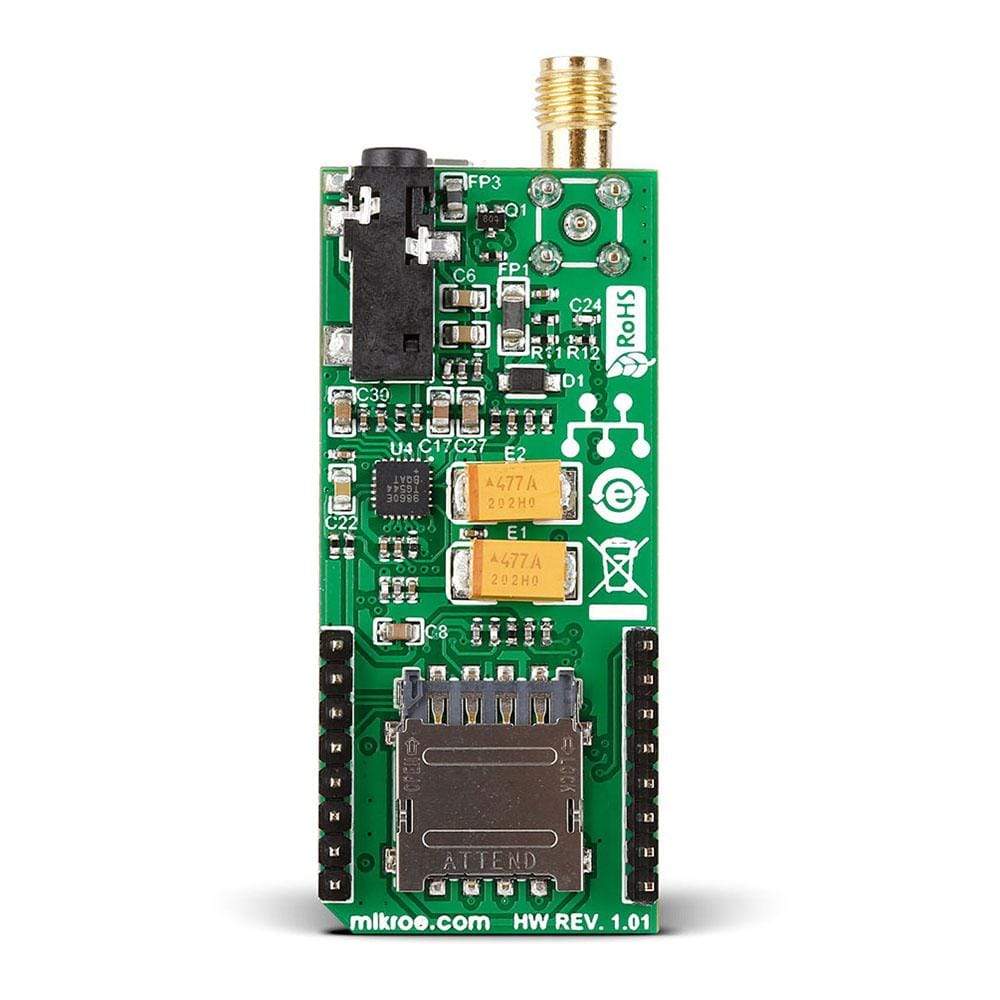
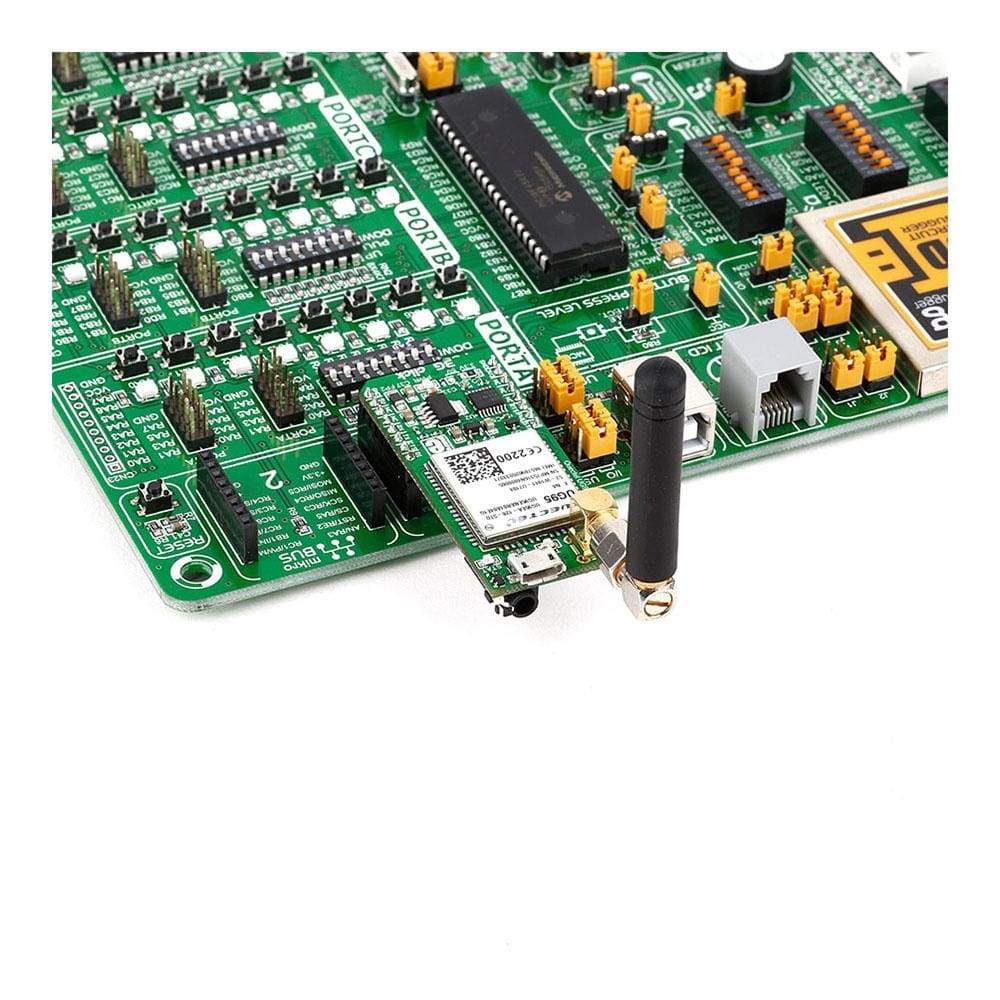
Overview
The 3G-EA Click Board™ is a versatile cellular network communication solution featuring the compact 3G UMTS/HSPA Quectel UG95 module. This module features a full set of cellular networking and communication options, such as the network indication, embedded TCP/UDP stack, HTTP/HTTPS stack, full GSM/GPRS/EDGE implementation, UMTS/HSDPA/HSUPA protocol implementation and more.
3G-EA Click Board™ features data rates of 7.2 Mb/s (downlink) and 5.76 Mb/s (uplink) in HSPA mode. on-board 16-bit audio CODEC IC adds high-quality voice communication capability.
Downloads
Das 3G-EA Click Board™ ist eine vielseitige Mobilfunk-Kommunikationslösung mit dem kompakten 3G UMTS/HSPA Quectel UG95-Modul. Dieses Modul bietet einen vollständigen Satz von Mobilfunk-Netzwerk- und Kommunikationsoptionen, wie z. B. Netzwerkanzeige, eingebetteten TCP/UDP-Stapel, HTTP/HTTPS-Stapel, vollständige GSM/GPRS/EDGE-Implementierung, UMTS/HSDPA/HSUPA-Protokollimplementierung und mehr.
3G-EA Click Board™ bietet Datenraten von 7,2 Mbit/s (Downlink) und 5,76 Mbit/s (Uplink) im HSPA-Modus. Der integrierte 16-Bit-Audio-CODEC-IC ermöglicht zusätzlich eine hochwertige Sprachkommunikation.
| General Information | |
|---|---|
Part Number (SKU) |
MIKROE-2226
|
Manufacturer |
|
| Physical and Mechanical | |
Weight |
0.028 kg
|
| Other | |
Country of Origin |
|
HS Code Customs Tariff code
|
|
EAN |
8606015078205
|
Warranty |
|
Frequently Asked Questions
Have a Question?
Be the first to ask a question about this.

